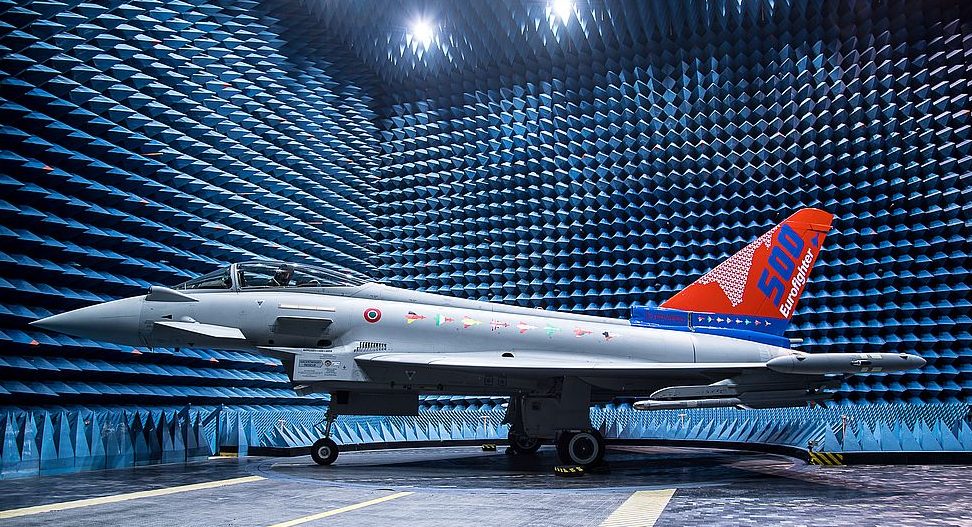
SHAH ALAM: The 500th Eurofighter Typhoon has been delivered to the Italian Air Force during a special ceremony held at Leonardo Aircraft Division’s Turin site on April 11. With 599 aircraft ordered, Eurofighter Typhoon is currently the largest collaborative industrial programme in Europe.

Eight customers have ordered the Typhoon with almost 400,000 flying hours achieved worldwide. The first Eurofighter was delivered to the UK Royal Air Force at the end of 2003. The 100th Eurofighter was delivered to the UK Royal Air Force in September 2006.

The 200th aircraft was handed over to the German Air Force in November 2009. The 300th aircraft was delivered to the Spanish Air Force in October 2011, and the 400th to the German Air Force in December 2013.
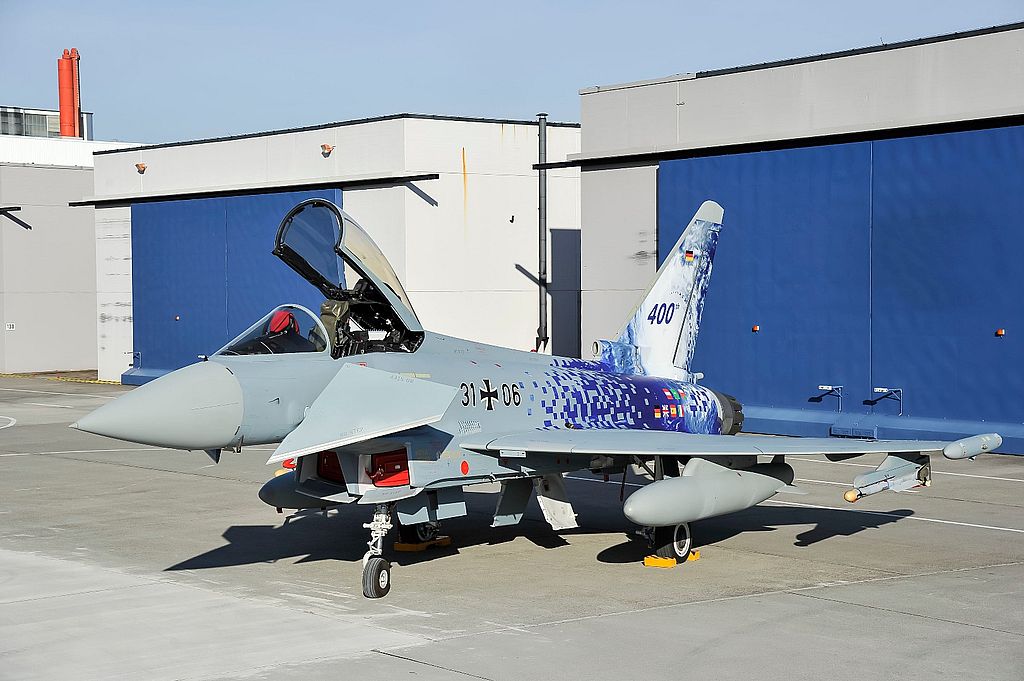
Of these 599 Aircraft going into service, a total of 451 are from the Tranche 2 and Tranche 3 production runs, so are completely identical in construction and equipment other than a few fuel and cooling pipes for the Conformal Fuel Tanks able to be mounted on the Tranche 3 fuselage.
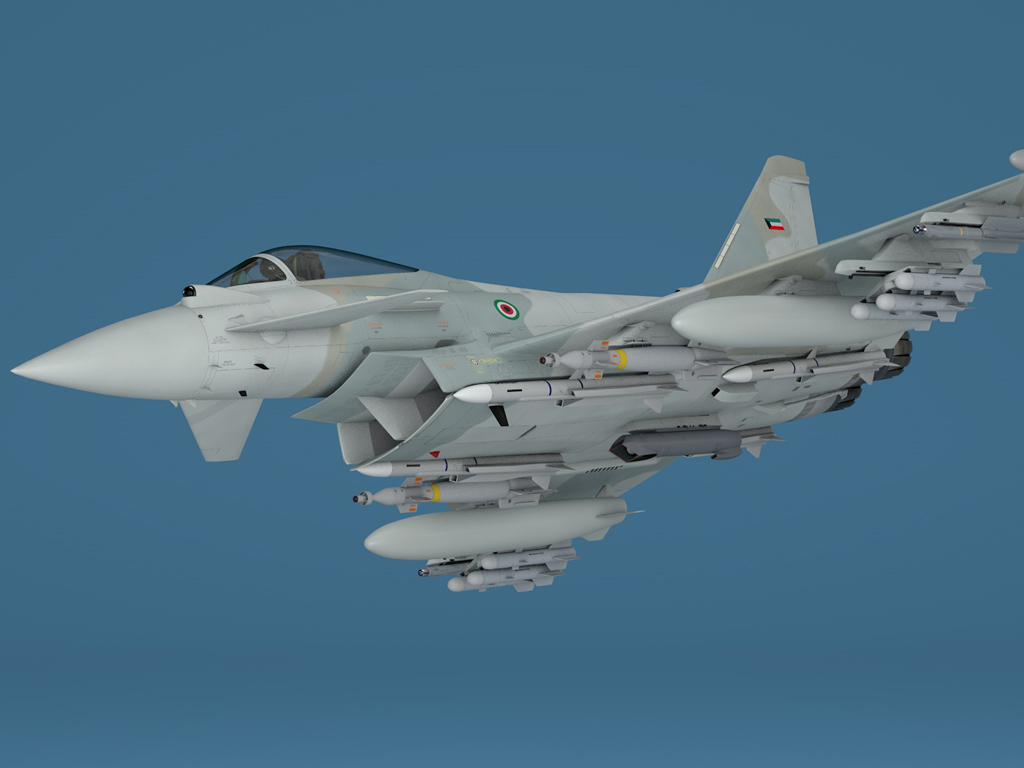
Tranche 2 and Tranche 3 can take CAPTOR-E Radar. Note that Tranche number does not mean the Aircraft capability, it means the physical standard of the aircraft, the capability comes from the Software and Weapons / Pod Clearances and is called Phased Enhancement Programme, with Typhoon currently developed to Phase 3 Enhancement (P3E) and P4E currently in process of agreement across the various Typhoon users.

Malaysia will get Tranche 3 standard with at a minimum, P3E capability, maybe P4E depending on timing. But changing from P3E to P4E is just a software load anyway.
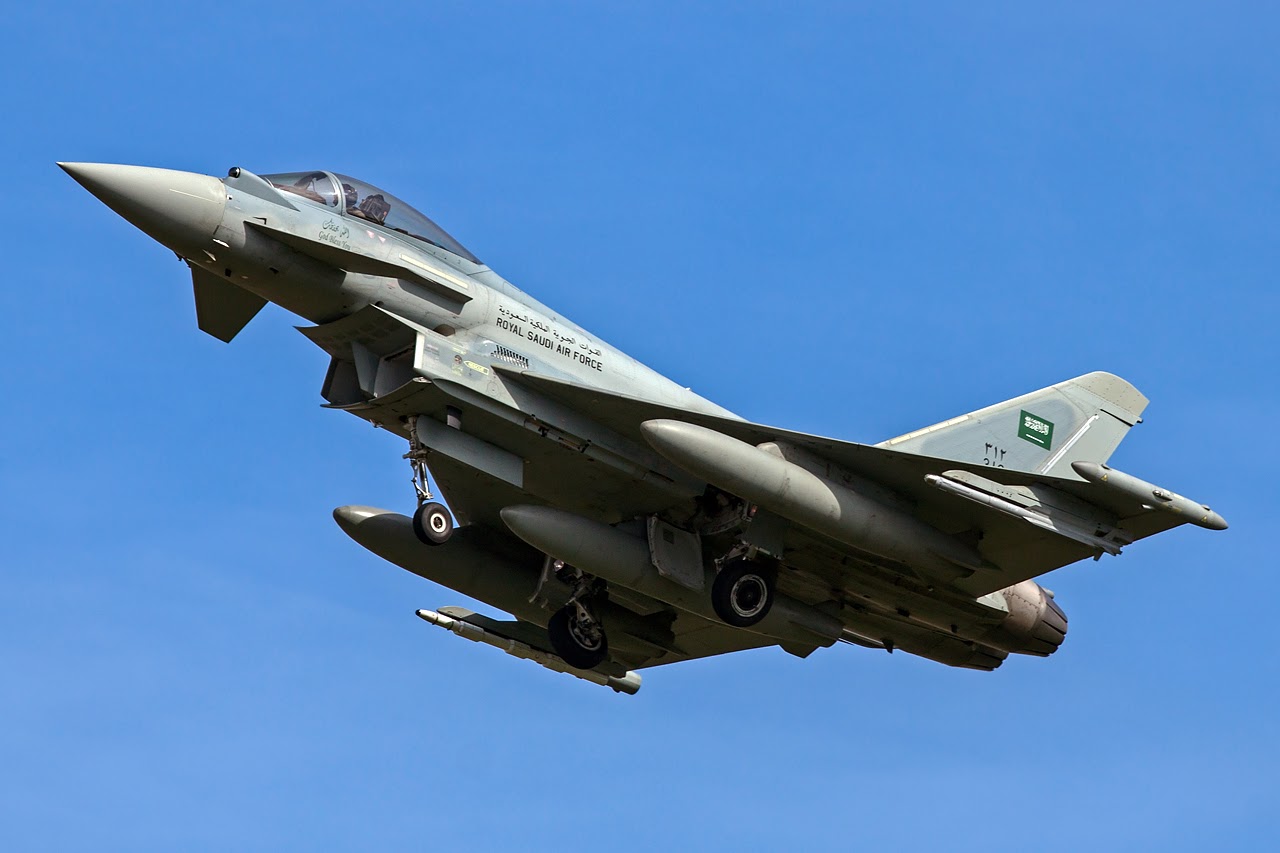
When these big Typhoon numbers are compared to the total Rafale order book of only 204 aircraft, there will be at least double the number of identical Repairable Items (Avionics, Engines etc.) in the global supply chain for the next 30-40 years.

This creates very good “economies of scale” for through life support which will provide the RMAF with the chance of a better Operational Expenditure after the Typhoon aircraft is in service. This is particularly important for the large expensive LRI’s such as Engine and Radar. RMAF have already experienced how fast OE can disappear on engines with their Russian equipment and even the MB-339 due to having the last remaining Viper Engines in operation.
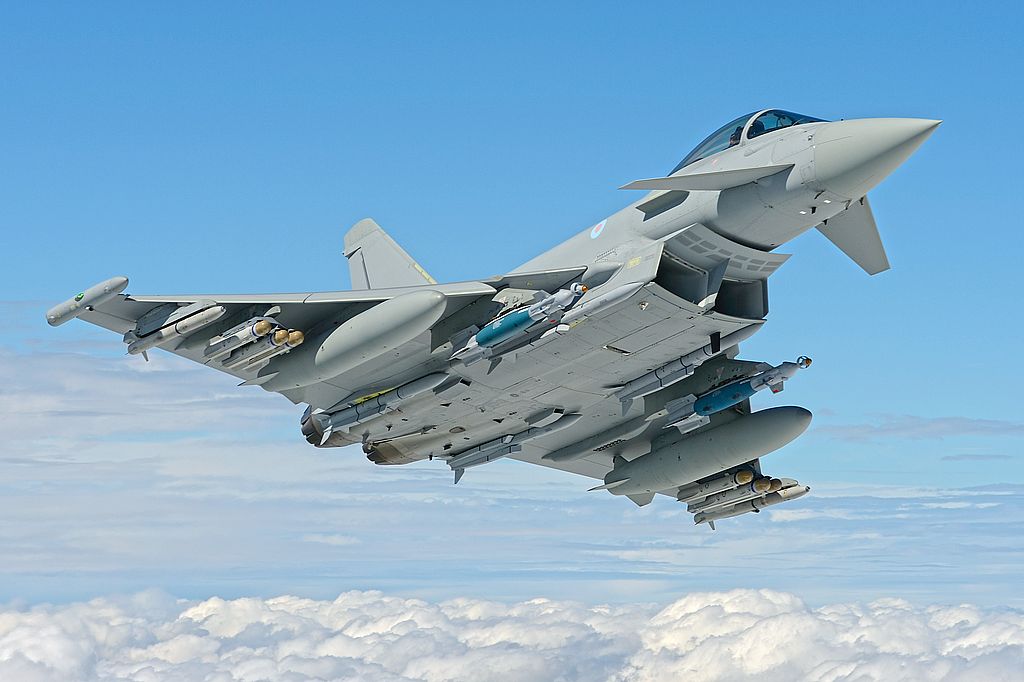
Pictures by Jamie Hunter
Having more than 1,200 EJ200 engines in service (not counting maybe 25-30 spares across all the countries) as compared to only 408 M88 engines should be a significant point for RMAF. Especially since it is known that EJ is extremely reliable and M88 not at all and with no future fixes.
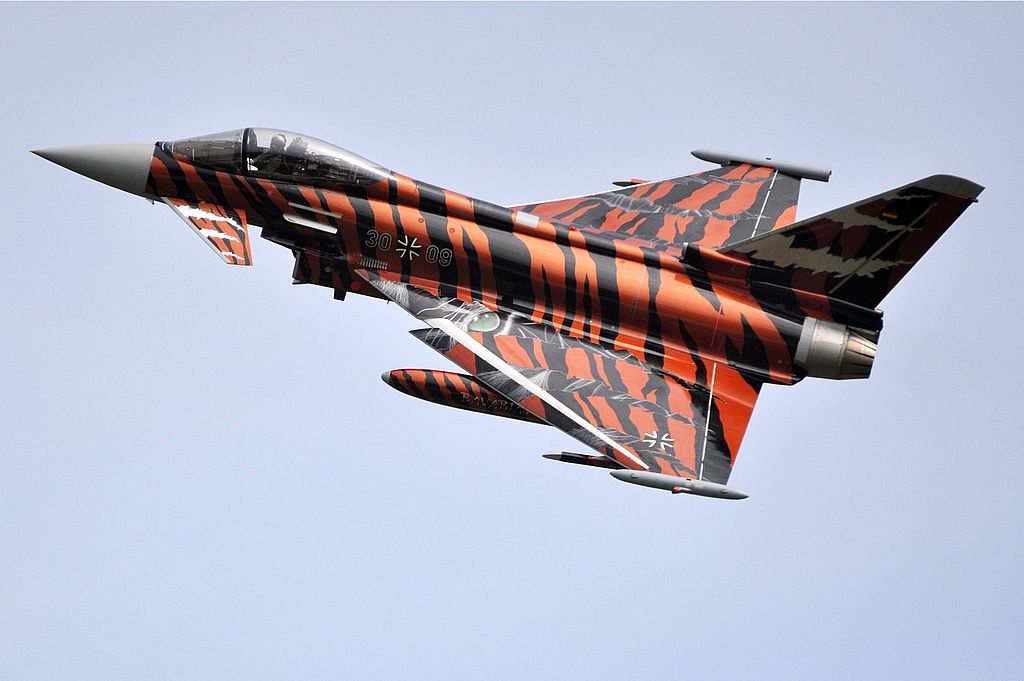
In addition to the Repairable Items advantage, having eight nations in the team who have positioned Typhoon as the backbone of their Air Force capability, rather than a few here and there such as Egypt, means that development of the weapons and aircraft through life will be guaranteed and not just dependent on the selling country making investment. Rafale is very dependent on French investment, Typhoon does not depend on the UK only.

These numbers do not include a potential second batch of 72 aircraft to Saudi Arabia, who is becoming one of Malaysia’s key political partners. So if the Saudi’s buy more, then there will be over 670 Typhoon’s versus only 204 Rafale (3.3:1 advantage to Typhoon) – Safety in Numbers.
— Malaysian Defence
If you like this post, buy me an espresso. Paypal Payment

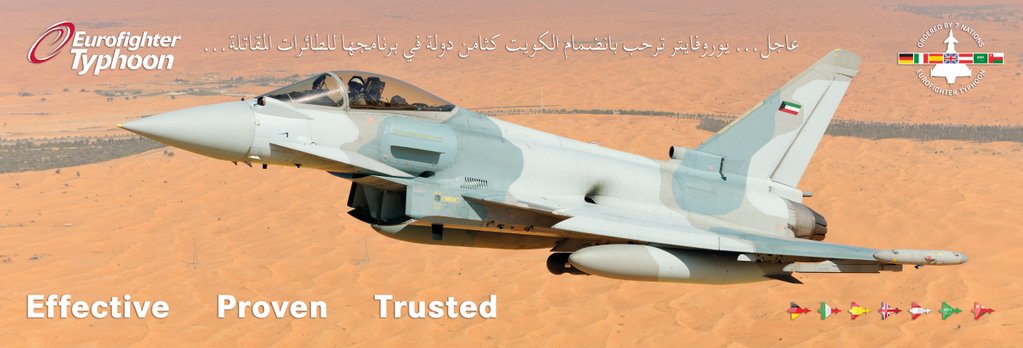

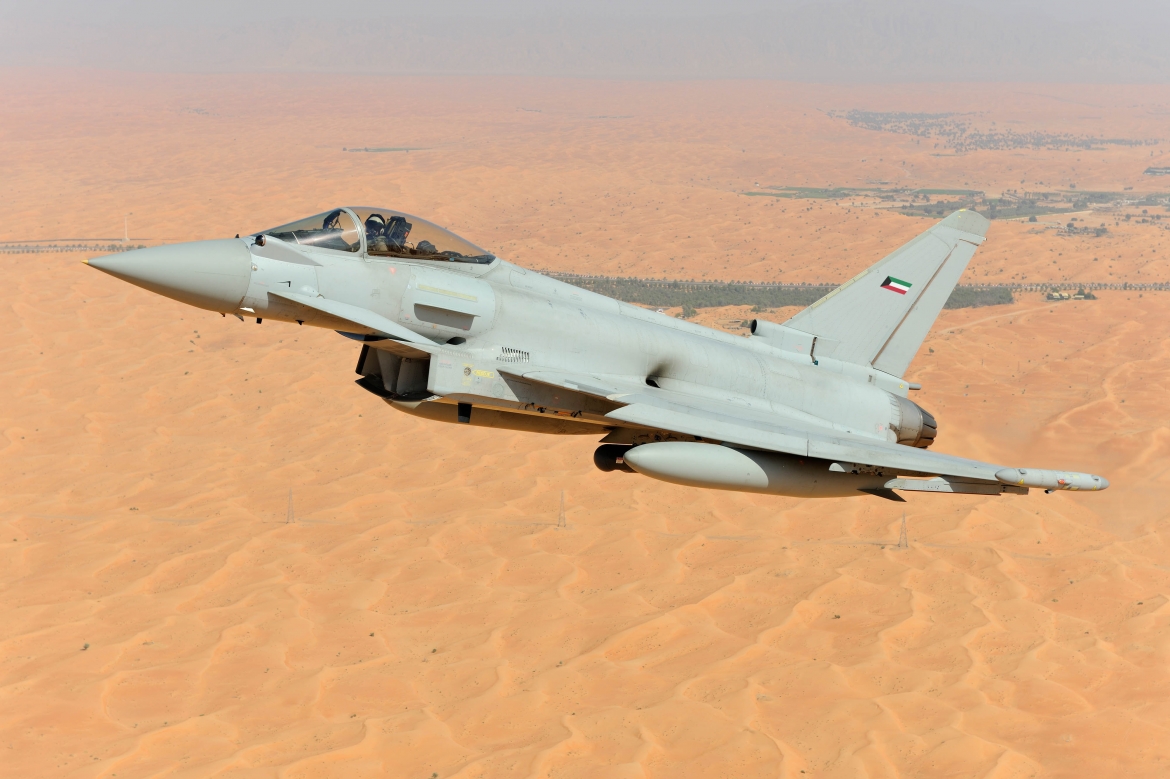
Looks like a point to point advertorial rebutting Rafale
I thought the UK is offering their surplus Tranche 1 planes to Malaysia?
Reply
As gap filler until the arrival of the new build ones. But that depends on us buying the Typhoons first
The question is, how many typhoon we can get with our tight budget. And can we get TOT of we buy that mighty typhoon.
Reply
18 as per RMAF requirement. As for TOT check out the earlier postings
Remaining Typhoon orders:
— Germany: 18 single-seaters (9 to be delivered in 2017 and 9 in 2018);
— Italy: 9 single-seaters and 2 two-seaters (3 more in 2017; 5 in 2018; 1 in 2019);
— Kuwait: 22 single-seaters and 6 two-seaters (2 in 2019, 9 in 2020; 9 in 2021, 8 in 2022)
— Oman: 9 single-seaters and 3 two-seaters (8 in 2017 and 4 in 2018);
— Saudi Arabia: 2 single-seaters for delivery in 2017;
— Spain: 12 single-seaters (7 in 2017 and 5 in 2018)
— United Kingdom: 18 single-seaters.
If Malaysia orders, it would be among (if not) the last Typhoon to be built.
BTW P3E enhancement does not include the AESA radar. Only the P4E includes the AESA radar, so P3E to P4E standard does requires more than just a software load. As it is the Typhoon cannot carry quite a few new weapons in malaysian arsenal, including the AIM-9X, JDAM and Harpoon.
Through life development/upgrades are also sketchy beyond 2020, as most original Typhoon nations are unwilling to invest in major upgrades other than those currently agreed and being implemented. If we buy the Typhoon now, we would get our 1st aircraft in 2021-23 at the earliest, and if we have to use it up to 30 years (because of the high investment), that is up till 2053. Would there be any upgrades till that time? Or there would be no more upgrades past 2025?
All those “economies of scale” also does not matter if the costs of the spares and maintenance itself is expensive in the first place.
********************************************
Now lets compare to the Legacy Hornet.
A total of 1,478 was built from 1980-2000. Planned upgrades by US Navy (and US Marines) to be used up till 2030.
Engines are used by hornets, Saab gripen, KAI golden eagles, HAL Tejas.
Electronics shared with super hornets and more (AESA modules are shared with F-15 eagles)
Cleared to carry a bigger range of weapons, from US and europe.
Availability of cheap (or free) secondhand spares from retired hornets.
Low investment (by buying used) and life time that would not cause problems with having to use it past its obsoletion (that is by around 2030). Money saved could be used to get a better 5th gen MRCA in the 2030 time frame.
Define ”expensive”. There is no current gen platform that is ”cheap” to support these days. Whether it’s Rafale or Typhoon; the very fact that these platforms have a high level of automation and a much higher electronics and other systems content mean that they will be more expensive to support compared to older platforms. They will also require better human resources compared to what’s needed at present. In fact, despite being ”expensive” newer platforms will in the long run or throughout their service life be more economical to support compared to the MKMs which have a radar, gear box, nozzles, landing gear, etc, that have a lower TBO compared to Western equivalents. Even our ”low houred” Hornets are increasingly becoming more maintenance intensive on account of the age of the various sub systems on board; requiring more checks and preventive maintenance than was the case before.
Again, buying used indeed has a ”low investment” but gauging exactly how much we’ll have to spend on used air frames for the duration of their time in service will be tricky as the older things get, there is more likelihood of things breaking down and requiring more checks for every hour flown compared to a newer platform. We have to plan not just at the ”low initial investment” but things in the long run. No point buying now to achieve short term costs savings only to discover as the years go by that the ”cheap” pre owned air frames we got are getting increasingly expensive to support.
There are various plus points to strengthen the argument why one should get pre owned but there are also similar plus points to indicate why one should – despite the initial high costs – buy new.
The curren gen platform includes the Hornets too. Open sources have shown both typhoon and rafale have some of the most expensive operating and aquisition costs of current fighters, regardless of the TBO of those individual components. To buy 18 of those Typhoons would cost somewhere around USD3 billion (around RM13.5 billion) and that is more than 3 times the cost of 18 SU-30MKM, and that is before adding all the operating costs. Is the Typhoon 3x better aircraft than the SU-30MKM? How much would it cost to get the used Hornets? Probably not more than usd300-400 million for 2x the quantity of aircrafts.
Buying used now means that in 2030 when those used planes have run out of flying hours and nearing obsoletion, we would just retire them and have the money then to buy the most current 5th gen fighters available in 2030. Buying something new (typhoon or rafale) now would mean we would be stuck with those brand new 4th gen fighter for up till 2050 at least, and we don’t know if upgrades (costing more money) could bring those fighters on par with anything newer in 2030-2050 (which includes KF-X in indonesia, F-35 in singapore and J-20 plus J-31 in china). I don’t want to see in 10 years time after spending usd 3 billion, we need to again spend usd 3 billion or more for another batch of different fighters.
I would totally agree on buying brand new now, if there is any affordable 5th gen fighter available. What I am against is buying another different but hyper expensive 4th gen fighter at the end of its production life, when newer 5th gen designs are slowly being rolled out.
Reply
The statement regarding only P4E including E-Scan is completely incorrect. E-Scan will be on all Tranche 3 Aircraft from Kuwait customer onwards and it has been included in the offer to Malaysian Government. E-Scan is an equipment fit at aircraft build, P3E / P4 E etc. is software designation. Hence RMAF will get E-Scan with P3E Capability at a minimum.
P4E is in development with the consortium and export nations now and looks at more weapons and sensors. Typhoon plans for capability update goes beyond 2025 and continues to look 5-10 years ahead. Typhoon update philosophy is new update of software every 2-3 years, customer choice whether they take it up and when.
The statement Malaysia will be amongst the last Typhoon to be built, is same for all Aircraft… Production should not be the concern, nobody makes F-18D anymore either but it is supportable because there are still lots in service! That statement equally applies to being amongst the last Super Hornet or last Rafale buyer. Super Hornet production is only kept alive with the occasional Act of Congress. Rafale has 60 more to build only versus Typhoon’s 99, so no different timeframe to Typhoon, unless KSA get the 72 more Typhoon’s they say they want. Rafale and Typhoon are all in the same competitions, so same chance of keeping production going (Finland, Belgium). The point of safety in numbers is that the investment by operators will continue as this is what everyone has
This is a glimpse of the future. As we seen with most new chinese designs, this will be in production probably in a few years time.
The J-31 prototype
https://qph.ec.quoracdn.net/main-qimg-9fe8b7ef9096ced9a45346c0a0835be0-c
http://i.guancha.cn/news/2017/01/03/20170103101249614.png
… – ”The curren gen platform includes the Hornets too.”
Actually it depends on which Hornet you’re referring too. Even when measured against the Super Hornet on a platform level; Typhoon and Rafale enjoy several advantages : to be expected given that both are newer designs and more growth potential.
…. – ”Open sources have shown both typhoon and rafale have some of the most expensive operating and aquisition costs of current fighters”
You keep mentioning operating costs but as I’ve pointed out there is no such thing as a ”cheap” to maintain fighter with regards to current gen platforms. It doesn’t exist, period.
Also, what are you comparing the operating costs of Typhoon and Rafale against? Gripen is a single engine platform, The Hornet and Eagle are not even contenders and future ”stealthy” platforms like the PAK FA haven’t even entered service. As for the the F-35 it’s not only a generation ahead of Typhoon and Rafale; being a newer platform incorporating technologies others – at present – can only dream of but also costs more than Rafale and Typhoon.
… – ”I don’t want to see in 10 years time after spending usd 3 billion,”
By right even after we get MRCAs we should be looking at an upgrade or even another platform after a decade or so; keeping up with the times and on going modernisation [something the RMAF and its sisters services would like to do]. I’m no prophet but given that Typhoon forms the main line of defence of several Tier 1 NATO countries; I think we can safely assume that the operators and OEM will not allow the capabilities of Typhoon to wither over the coming decade or so with regards to progressive software or hardware upgrades.
… – ”I would totally agree on buying brand new now, if there is any affordable 5th gen fighter available.”
… – ”How much would it cost to get the used Hornets?””
Again : there is no ”affordable” current gen fighter available; just doesn’t exist. Whilst I have continued to acknowledge that buying pre used does have its merits [no denying that]; I will at the same time refute any suggestions or notions that buying pre used [mainly to achieve costs savings] has no disadvantages or is a panacea. Everything comes with a penalty as you’re aware. The plain fact remains : despite being ”low houred” a platform [especially a 30 year old one] will get increasingly maintenance intensive as it gets older. The RMAF does not have deep pockets or an extensive support infrastructure; which is one reason why it’s extremely wry of buying pre used even if short term costs savings can be achieved.
Rather than focusing on short term issues like the procurement costs of pre used platforms; I’m looking at long term issues like the total support/maintenance costs of a 30 year old platform which will get increasingly maintenance intensive as it gets older.
… – ”To buy 18 of those Typhoons would cost somewhere around USD3 billion (around RM13.5 billion) and that is more than 3 times the cost of 18 SU-30MKM,”
Indeed but this is really an apples to oranges comparison as the MKM is a much older design which contains stuff a generation behind in technology compared to the Typhoon or Rafale. To set the record straight as I’ve been asked whether I have anything to gain [if only] if Typhoon is selected ; I’m not a Typhoon or Rafale fan boy; merely someone looking at things objectively over a long term period based on what the RMAF’s requirements are and based on what the government has already agreed in principle to fund. Personally, I still think the Super Hornet – from a logistical and training perspective – is the most logical solution but to be realistic; it’s politically dead despite it still having strong backing within the RMAF.
… – ” could bring those fighters on par with anything newer in 2030-2050 (which includes KF-X in indonesia, F-35 in singapore and J-20 plus J-31 in china).”
I’d rather focus on things at a systems level rather than a platform centric perspective. With regards to what will be operated in the
” 2030-2050” period; if we wanted to base procurement on what will be available decades from now; we wouldn’t buy anything at all.
I would have to agree with … on getting the Kuwaiti Hornet to be a more viable stop-gap measure until 2030.
With the savings, we could embark on the AEW&C Programme, which is already long overdue.
Very impressive discussion here. For me I totally agree with Mr. azlan for not get used fighter for RMAF, its too risky and will be more costly. MKM’s and other Russian fighter is much cheaper but it will bring much headache and costs for support’s/maintenance issue.
Azlan,
Okay on a systems level, would you be comfortable flying typhoons or rafale in 2030-2050? A lot of the so called advanced items in the typhoon like the AESA radar and electronics suite has not even fitted in any operational typhoons, and items similar to that is also being developed for the SU-30MKM/MKI/SM platform.
Costs? You can compare flying costs of the typhoon and rafale against F-16 and F/A-18 for starters. As of now, the costs of F-35 is actually comparable to the typhoon and rafale. Probably you could ask UK’s RAF why are they not going to buy more typhoons instead of the F-35?
To me,if we wait now for something 6th gen (which none is flying, even prototypes), then it is rediculous, but 5th gen fighters is emerging and it would not be prudent if we don’t wait for just a few years to see which one matures.
We don’t buy a different major equipment every 10 years. We should be buying something new that is at its early stages of potential that could be top of the line and used up to 30 years from now. If not, just add something that is already in the fleet for a stopgap to get something really new, not brand new end of the line products.
***********************************************************
To the BAE/Eurofighter Consortium boffin that replied to me on behalf of Mr. Marhalim…
I as a Malaysian citizen only wants the best for my country, as a long term investment, I don’t see getting Typhoons or Rafales right now and having to stick to it probably up till 2050 is a good thing, considering we just bought 18 brand new fighters about 10 years ago and 5th generation fighters are just around the corner…
If the offer was in 2007 for example, it could still be considered, but in 2017 were other countries are inducting brand new 5th generation fighters, I really think the viability is not there anymore.
About the E-scan. There is no operational aircraft currently fitted with the radar. There is no commitment of any of the original eurofighter nations to install the E-scan. So there is no assurance that there would be more than a handful of aircrafts installed with the E-scan.
About the F/A-18D is out of production. Yes it is. But capability upgrades can be piggybacked with those of the Super Hornets, including the APG-79 AESA radar and ALQ-214 inboard jammers. Anyhow getting additional low houred used hornets now and flying it up till its flying hour limit would take it up to around 2030, which is a time window where those 5th generation fighters have considerably matured, and would be good replacement for the hornets. If my country spends billions now on typhoons or rafale, we would be stuck with super expensive brand new fighters for 30 more years (up to 2050). I want my country to have 5th gen fighters in 2030, not stuck with 10 year old Typhoons or Rafale. BTW, if the typhoon is great, why isn’t Britain taking up all of its comitments, unloading the british commitments to saudi arabia instead? Why is the RAF buying the F-35 instead of more Typhoons? In Finland and Belgium, the open secret is that they want F-35s, if they can get F-35s (which does not cost more than the Typhoon), why should they go for Typhoons?
Azlan,
TBO does not matter if you have a great AF that does more calendar than FH. The hornets are doing just fine. Apart from some wear, obsolescence and budget constraint is more pronounced. Schedule maintenance interval maintained. Preventive is independent of age.
……. – ”Okay on a systems level, would you be comfortable flying typhoons or rafale in 2030-2050?
If you want to talk about what may or not be available in the 2030-2050 period and how effective or relevant whatever assets we buy in the coming years will be then; we must as well not buy anything period/full stop.
…… – ”but 5th gen fighters is emerging and it would not be prudent if we don’t wait for just a few years to see which one matures.”
Fine on paper but the reality is that the RMAF needs additional air frames and can wait longer if it’s to meets its operational and training requirements. Again, buying 30 year old air frames is nor risk free as you keep suggesting and has its penalties. What looks great on paper might look great in reality.
…… – ”BTW, if the typhoon is great, why isn’t Britain taking up all of its comitments, unloading the british commitments to saudi arabia instead? ”
I have nothing for or against Typhoon but viewed objectively it is a capable platform; especially when networked with other assets and operating as part of an overall package; like how all 5th gen platforms are meant to operate. As such, comparing it at the platform level or even questioning how capable it is should not arise. There are various reasons why Britain is not getting as many Typhoons as initially planned; doesn’t mean it’s not capable ….. If that were the case then we can also question why France and the U.S. are not getting as many Rafales and F-22s are originally planned. BTW, there are various reasons why Britain is not getting additional Typhoons.
Unlike some; I don’t have a personal preference as to what we get.
Whether we Typhoon or Rafale won’t make a vital difference if operated at a platform level as it’s the systems that count. Again : whilst I fully agree that buying 30 year old platforms has merits [cost savings being the main one] the idea that going down this route is a panacea or will be risk free [even as an interim solution] is fantasy. And as I’ve also state repeatedly [even if you dismiss it or not agree], there are legitimate reasons why the RMAF and others are extremely wary of buying pre used [even one that is low houred and especially one that is 30 years old] and utilising it as a front line type.
…… – ”We should be buying something new that is at its early stages of potential that could be top of the line and used up to 30 years from now.”
Buying something that ”is at its early stages of potential” has its potential risks [the RAAF ordered the F-111 at a very early stage] as some have learnt [there are plus and minus points]. As for the 5th gen fighters you constantly refer to : PAK FA and the Chinese equivalent are not even in production; same goes with whatever the TNI-AU gets with Korean assistance and is it unlikely that the F-35 will be operated by a potential adversary. There is also the matter that a 5th gen platform will not necessarily result in everything a generation earlier being rendered obsolete over night.
@azlan
“There is also the matter that a 5th gen platform will not necessarily result in everything a generation earlier being rendered obsolete over night.”
If that is the case, we don’t really need the typhoon or rafale, as the mkm and hornet should not be obsolete overnight too.
I think you know very well this is not the place for absolutes. The key words in Azlan’s statement are “not necessarily (rendered obsolete overnight).”
There is no point claiming the MKM and Hornet will not be obsolete and therefore we won’t need the Typhoon or Rafale.
I think you know that upgraded 4th generation platforms are adequate for many roles, and even in more demanding situations they have a place alongside 5th generation ones (if and when we acquire any, decades later).
The MKM and Hornet are inherently versatile platforms, the problem lies in having to develop unique upgrades ourselves if we wanted them. And all the other reasons for not wanting more MKMs.
@ AM
At the earliest, we can only sign the rafale or typhoon in probably like 2020? The earliest aircraft would be delivered by probably 2022, and full operational capability by when? 2025-6 maybe?
In 2025, it does not matter if you fly the 20 year old mkm, 30 year old hornet, or a brand new typhoon or rafale. BVR how do you detect a 5th gen low observable fighter? How can you shoot at 5th gen low observable fighter BVR? No matter if you have super long range meteors, aesa radars, and what not, 5th gen fighters will detect a 4th gen fighters 1st and have an earlier kill window. And if in 2020 you have just spent usd3 billion on typhoons or rafale, i dont think the government will have the means to spend billions more in 5,10 or 20 years time on new 5th gen fighters.
This is why i disagree on spending billions now on typhoon or rafales.
Does anyone know the month of delivery of the last 2 Saudi EFAs?
@ Simona
The last saudi Eurofighters is being delivered now.
https://pbs.twimg.com/media/DBond8HWAAI9ViA.jpg
With UK polls to be held in a few months time, nobody in UK wants to jeopardise their chances by approving big weapons deal with Saudi in the brink of suicide bombings that hit UK recently. So probably there won’t be any additional Eurofighter orders in the near future. Not to mention saudi already signed a 110 billion dollar defence deal with the US.
Reply
The 110 billion Saudi is just a mirage
The RAF is not fitting out all of their Typhoons, for now at least, with the new AESA Radar because of a lack of funds.The National Health Service budget cannot be cut right now, so the defense budget is the target.Their purchase of the F-35 is due pressure from the US, as well as the fact that the F-35 and the Typhoon serve very different purposes in the RAF.The F-35 is not an air superiority fighter, but working with Typhoons, you get a very balanced Air Force.A major drawback to the F-35 is the upkeep of the radar absorbent materials, which is blasting a hole in the USAF budget.Countries like Norway and Belgium have chosen the F-35 due to some real pressure from Washington.I would not choose the F-35…